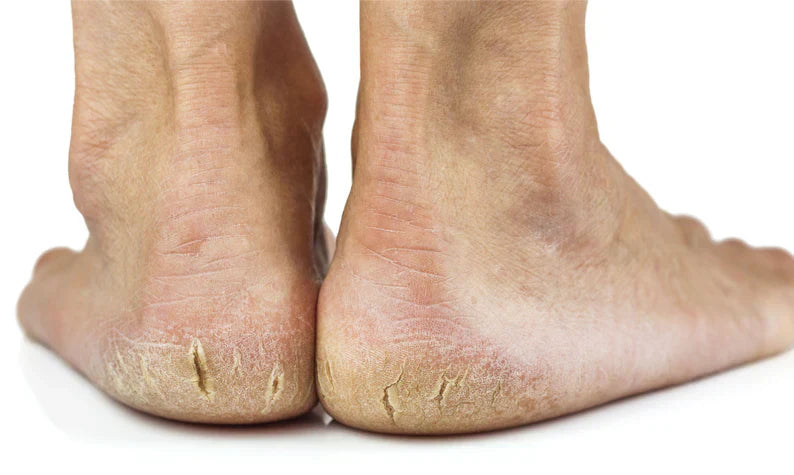Diabetes and Cracked Heels: Finding Relief From Foot Discomfort

When living with diabetes, proper foot care is important for your overall health. Without it, you can develop painful, cracked heels that put you at risk of developing an infection. Knowing how to prevent this helps you protect your feet and relieve the pain caused by having diabetes and cracked heels.
The Dangers of Diabetes and Cracked Heels

While it's not uncommon to develop cracked heels, if you're diabetic, it could be a sign that your diabetes is out of control. If the nerves responsible for controlling oil have been damaged, this can lead to an imbalance of moisture in your feet which in turn may cause further nerve damage.
You should address the issue immediately to avoid developing an infection from fungus or germs that can enter your body through the cracks in your heels.
Tips for Treating and Preventing Cracked Heels
Foot care is a critical part of managing diabetes and preventing cracked heels. Here are four tips to help you develop a daily routine of your own.
1. Inspect Your Feet
Take time every day to inspect your feet and look at their condition. Check your heels for signs of cracking and make note of any cuts or sores you see. If you start to experience pain or numbness or notice an injury that isn't healing, contact your doctor immediately. Wounds on your feet can take a long time to heal due to complications associated with having diabetes and cracked heels.
2. Wash Daily
Wash your feet daily, but resist the urge to soak them, since this can dry them out. Be sure to use warm water and mild soap, and while your feet are wet, use a pumice stone to remove dead skin. Don't forget to clean between your toes and dry them as well. Washing your feet this way keeps them clean and helps prevent a possible infection.
3. Use a Moisturizer
Once your feet are clean, moisturize them with petroleum jelly, lotion or cream such as Miracle of Aloe foot cream. Rub it all over your feet except between your toes. Afterward, put on silicone socks or natural fiber socks, such as cotton, to help lock in moisture and protect your feet. This daily routine will soften your skin, heal your cracked feet and help prevent infection.
4. Wear Proper Shoes
If you suffer from diabetes, it is important to protect your feet by wearing the right type of shoes. Always select footwear that is comfortable and fits properly. Avoid flip-flops, sandals and open-toed shoes that don't protect your heels or toes. Socks should also be on your feet at all times regardless of the shoes you wear.
Relieving the Pain of Diabetes and Cracked Heels
If you have diabetes and cracked heels, you must pay special attention to your feet and take care of them. This will protect your health and prevent worsening symptoms. If you already have cracked skin, try developing a care routine at home to relieve your pain and help your feet to heal. For moisturizing cream and other tools to help you, check out our selection of foot care products today.